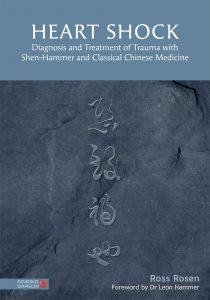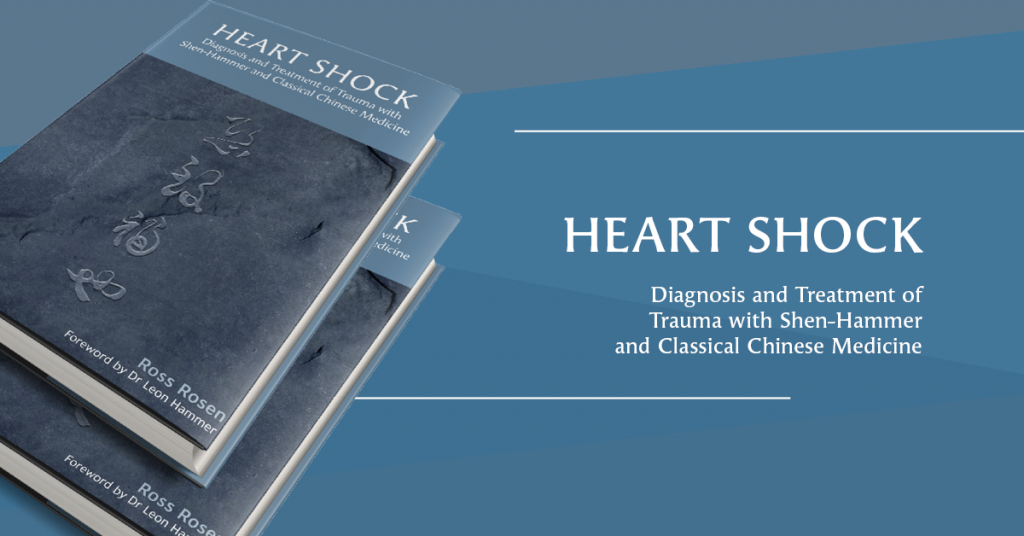Ross Rosen is a licensed practitioner and Master of Chinese medicine, as well as the author of Heart Shock – Diagnosis and Treatment of Trauma with Shen-Hammer and Classical Chinese Medicine. In this article, he writes about unravelling the past to create a happy present and future, and the rising practice of treating trauma with acupuncture.
The prevalence of those who have encountered trauma in their lives is staggering. If my medical practice is any indication, roughly 75% of those I treat have signs and/or symptoms of past traumatic events. And whilst most patients seeking treatment (and most medical providers for that matter) don’t recognise the connection of their symptoms to traumas that may have occurred even decades prior, not addressing the traumas can create a major roadblock to successful treatments, handcuffing the practitioner and frustrating the patient who does not fully find relief.
Some of the common symptoms that present with a history of Heart Shock include: emotional instability and fluctuating moods; feeling overwhelmed and like one is on a roller-coaster emotionally; depression and anxiety; insomnia; fatigue; muscle and joint pains; memory loss; feeling tense and irritable, and more. Additionally, long-term symptoms that don’t seem to fully resolve, or become cyclical in coming and going, are also typically the result of trauma, disrupting the body’s healing mechanisms.
In the Chinese medical lineages that I practice in, trauma is called ‘Heart Shock’. This term refers to the systemic impact that trauma has on one’s physiology and psychology, and is a form of chaos preventing homeostasis and the return to the baseline functioning prior to the trauma. The trauma can be physical, such as major injuries, but it can also be emotional, encompassing such events as the loss of a loved one, betrayals, and major life disappointments. It can also include aspects of both, such as abuse, and even be events that one is completely unaware of, including birthing trauma (e.g. cord wrapped around neck, stuck in birth canal due to breech position, etc.). In fact, the general rule of thumb is that the earlier in one’s development the trauma occurs, the more severe the implications that can result.
Objectively, there are many signs that a qualified practitioner can detect with skilful observation and palpation. The pulse gives the most detailed information and when one finds a Rough Vibration over the pulse, it is a sure sign of past trauma. Specific rate and rhythm patterns, as well as particular waveforms on the radial pulse can also reveal the presence of past shock.
The complexion, too, can reveal trauma. Typically, a bluish-green hue over the face clues one in to Heart Shock. In Chinese medicine, one can view the ‘shen’ (the animated spirit) in the complexion, and trauma interferes with the shen’s full expression, clouding and stagnating it. Chinese medicine has many other ways of detecting and corroborating trauma, including abdominal diagnosis, Chinese medical palmistry, tongue and eye diagnosis, etc.
Because Heart Shock is a systemic issue, treatment strategies and treatments that factor in the myriad relationships must be considered. Some of the primary strategies include: nourishing the heart; calming the spirit and providing comfort; relaxing nervous system hypervigilance; strengthening and anchoring the adrenals and tempering adrenaline; re-setting the ‘alarm,’ invigorating the circulation and breaking through the ‘stuckness’ of the past to move into the present; creating a different narrative and internal dialogue post trauma, etc.
To accomplish this, treatment approaches can utilise acupuncture (including all the channel systems from the superficial muscle channels to the deeper organ levels), herbal medicine, essential oil blends massaged into acupoints, meditation and breathing exercises (including qigong), movement therapies (including taijiquan, yoga, etc.), and bodywork (massage, tuina, etc.), as well as lifestyle modifications (e.g., dietary therapy).
Within the realm of acupuncture all the channel systems can treat trauma, some excelling in particular aspects. For example, the sinew channels are wonderful for calming and relaxing the nervous system, relieving muscular tension and armoring, and promoting the proper circulatory dynamic (allowing yang to circulate, but all descend back to the kidneys). The luo vessels clear interior heat, help to release the stagnant blood that traps traumatic memories and experiences, as well as helping to shift psychosocial narratives. The divergent channels, depending on how they are needled, can help to quiet the emotional upheaval and put the trauma back into a state of latency, or release the trauma from the depths of one’s energetic body-mind; the eight extraordinary channels release old traumas that have embedded themselves into the constitution; and the primary channels have elements of addressing aspects of all of these as well as the five phase dynamics and aspects of how traumas can progress through the channels.
 Heart Shock
Heart Shock
Diagnosis and Treatment of Trauma with Shen-Hammer and Classical Chinese Medicine
Ross Rosen. Foreword by Dr. Leon Hammer
Using teachings of the Shen-Hammer and Yuen lineages in Chinese Medicine, this guide examines the concept of ‘Heart Shock’, or the body’s systemic blocking of the healing of trauma. Applying energy dynamics, channel systems and herbal strategies, it describes the most effective approaches to diagnoses and treatment.
